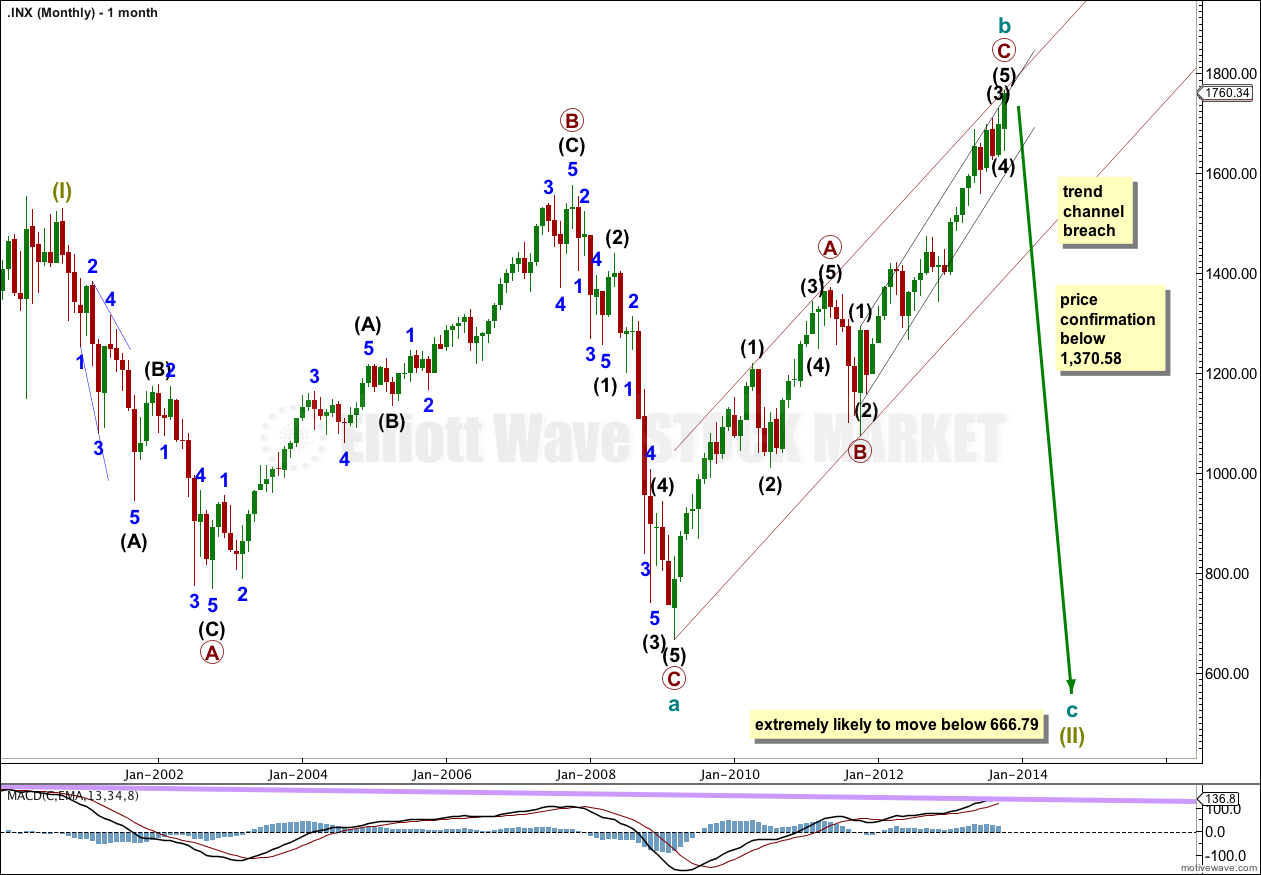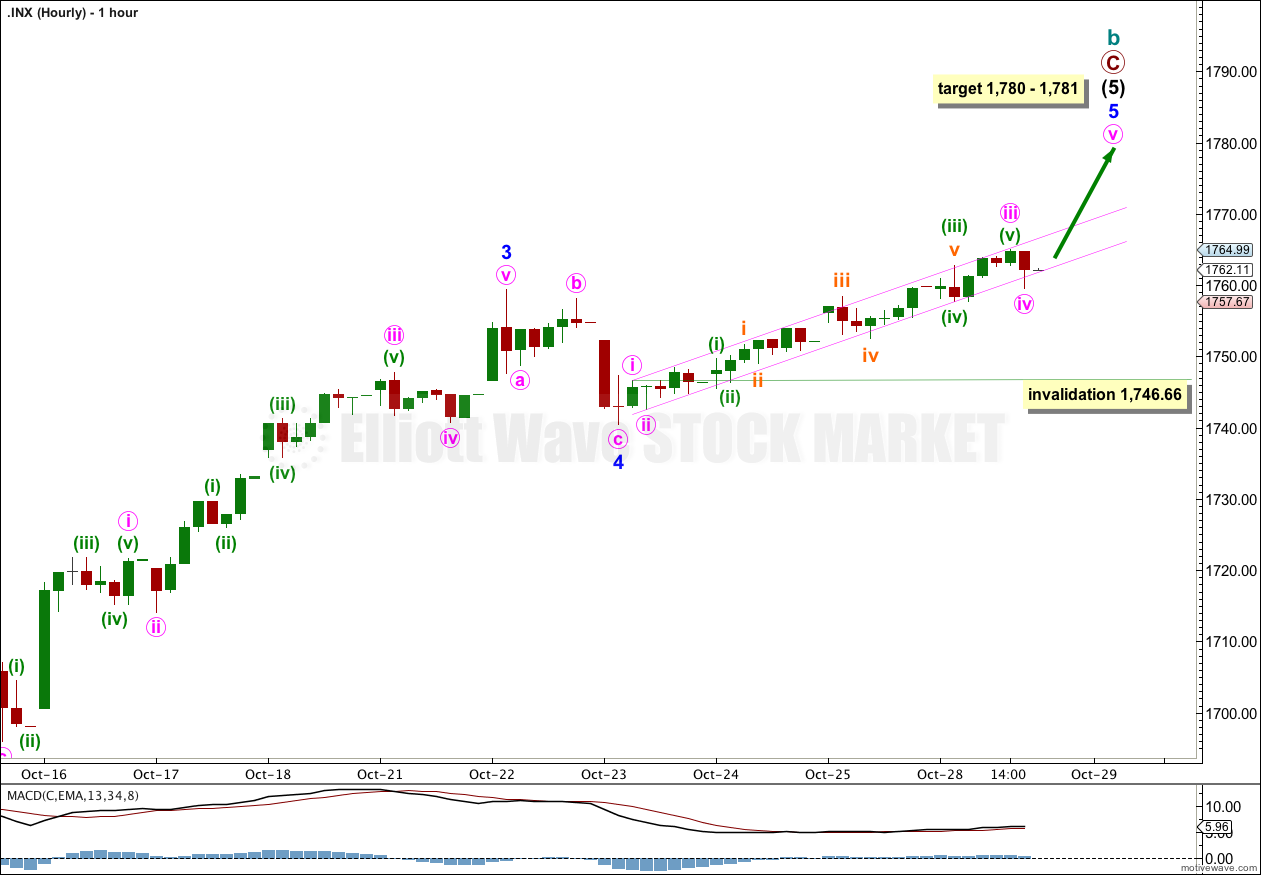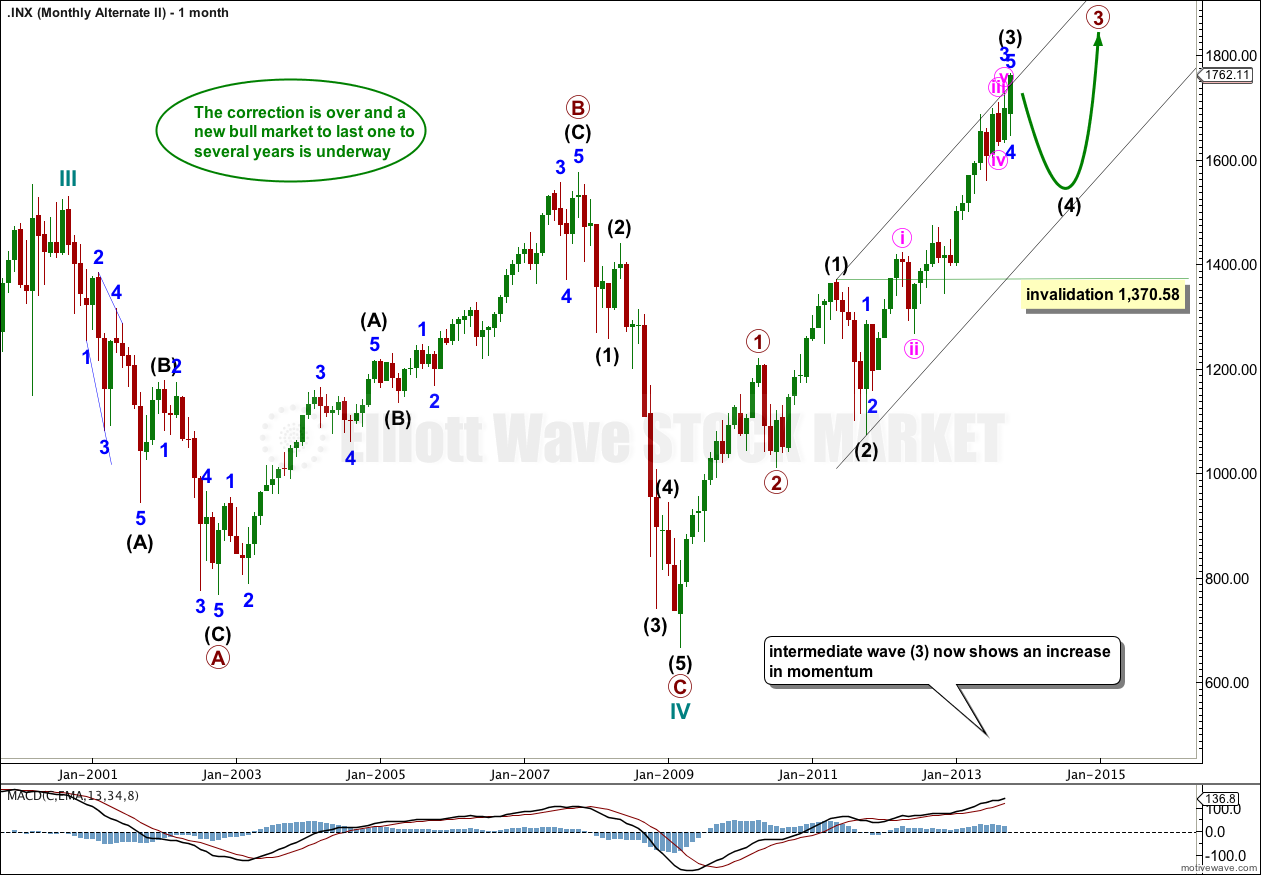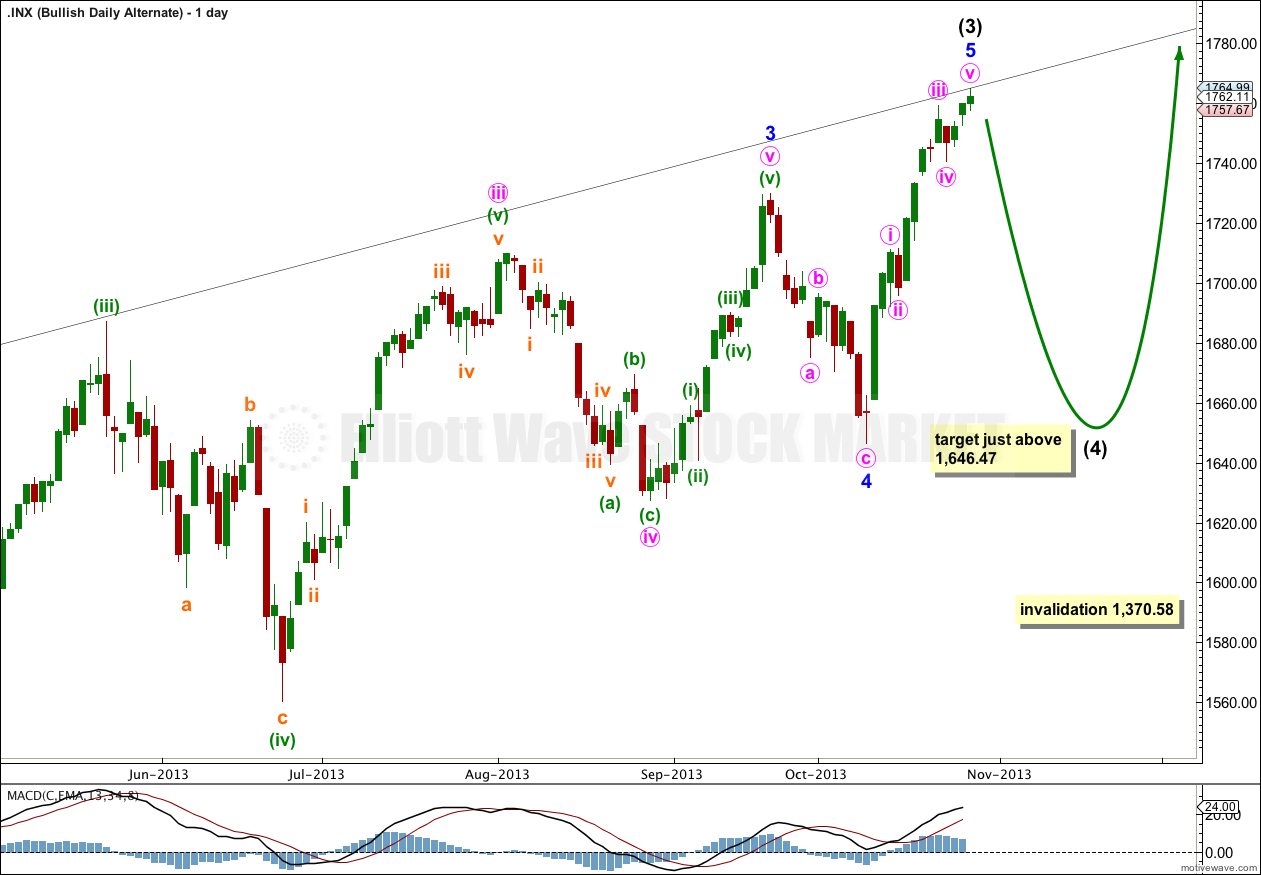Last analysis expected one more day of upwards movement to a target at 1,764 to 1,765. Price moved higher to reach 1,764.99.
This is a critical juncture. If the main wave count is correct then we should see a trend change either now or maybe within another eight days.
If price keeps going upwards after this week then my alternate would increase in probability. From today onwards I will publish the bullish alternate alongside the main wave count, which I have had for years now.
Click on the charts below to enlarge.
Main Wave Count.
For this wave count cycle wave b is now either complete here or should complete very soon. Cycle wave b is now 127% the length of cycle wave a, which is nicely within the common range of 100% to 138%.
Within cycle wave b primary wave C subdivides as a very typical looking impulse, with an extended third wave.
This wave count has a higher probability than the alternate. Upwards movement over the last 4 1/2 years subdivides best as a zigzag. Importantly, it does not show typical features of a third wave having just passed the strongest middle portion (which the alternate says must have recently happened). If something is “off” about the supposed recovery then it must be a B wave because there is plenty that is off in this scenario in terms of social mood.
Intermediate wave (4) lasted 14 days, just one more than a Fibonacci 13.
Intermediate wave (5) may have lasted a Fibonacci 13 days. The next Fibonacci duration would be in a further eight days. Please note: this is a rough guideline only. Within this wave count there are few Fibonacci time relationships at primary or intermediate degree. Sometimes this happens, but not often enough to be reliable.
October is a common month for big trend changes with the S&P 500. This wave count could very well have a complete structure for intermediate wave (5) now.
Primary wave C is now just 0.53 points short of equality with primary wave A.
Within primary wave C intermediate wave (3) was just 0.76 points longer than 2.618 the length of intermediate wave (1), and if intermediate wave (5) is over here then there is no Fibonacci ratio between intermediate wave (5) and either of (1) or (3).
Ratios within intermediate wave (3) are: minor wave 3 was 16.23 points longer than 1.618 the length of minor wave 1, and minor wave 5 is so far just 2.14 points short of 0.236 the length of minor wave 3.
Ratios within minor wave 3 are: minute wave iii was just 7.66 points longer than 1.618 the length of minute wave i, and minute wave v if it is over has no Fibonacci ratio to either of minute waves iii or i.
Ratios within intermediate wave (5) are: minor wave 3 is 1.16 points short of equality with minor wave 1, and minor wave 5 is now just 0.27 points longer than 0.236 the length of minor wave 3. Because minor wave 3 was slightly shorter than minor wave 1, minor wave 5 is limited to no longer than equality with minor wave 3. This maximum point is at 1,803.90.
If price continues through the first target then the next target would be at 1,781 where intermediate wave (5) would reach 0.236 the length of intermediate wave (3).
Within intermediate wave (5) no second wave correction may move beyond the start of the first wave. This wave count is invalidated with movement below 1,646.47.
Only because we should always assume the trend remains the same, until proven otherwise, is this my main wave count.
It is still possible that we may see a few more days of upwards movement as minor wave 5 may be incomplete.
At 1,780 minor wave 5 would reach 0.618 the length of minor wave 3. At 1,781 intermediate wave (5) would reach 0.236 the length of intermediate wave (3).
Within minor wave 5 minute wave iv may not move into minute wave i price territory. This wave count is invalidated with movement below 1,746.66.
It is possible that this structure is complete.
Ratios within minor wave 5 are: minute wave iii is 1.18 points longer than 2.618 the length of minute wave i, and minute wave v is 0.07 longer than 0.382 the length of minute wave iii.
If we see movement below 1,746.66 tomorrow then this wave count will increase very slightly in probability. At that stage minor wave 5 would have to be over because downwards movement could not be a fourth wave correction within it.
Bullish Alternate Wave Count.
Today I will again publish this monthly chart, and for the following days I will publish only the daily chart.
It is possible that we are and have been in a new bull market for a cycle degree fifth wave. Cycle waves should last from one to several years (as a rough guideline).
If this wave count is correct then we have recently passed the middle of a third wave. During such a phase social mood should be more positive than negative. At this time I could not say that is true. There is plenty of social unrest globally, and from what I see of the US from my perspective in New Zealand (and having family within the USA) it appears that socially mood is fragmented, and leaning more toward the negative side. This looks typical of a B wave, which reflects the fragmentation in social mood. A typical third wave should be clearly more positive than negative, and from a social mood perspective it does not look like it.
For this alternate downwards movement would be expected to begin here, or very soon, for intermediate wave (4). This downwards movement must subdivide as a corrective structure, most likely a flat or a combination or a triangle.
Intermediate wave (4) may not move into intermediate wave (1) price territory. This wave count would be invalidated with movement below 1,370.58.
For this alternate wave count I would expect intermediate wave (4) to most likely end a little above the end of minor wave 4 at 1,646.47. If it does end there then downwards movement would not be enough to provide price confirmation for the main wave count. Careful attention to structure would be required to determine if the downwards movement subdivides into a three or a five.






